Joint Base San Antonio
About San Antonio
Time to invest in some new footwear because if you’re San Antonio-bound, you’d better show up in boots! The Alamo City is one of the military’s most envied postings and is often referred to as “Military City USA.” Low cost of living, affordable homes, and the lack of state tax on retirement income are a few financial perks to living and retiring in this Texas city. A robust job market that seems partial to government and defense/security contracting ensures employment opportunities for spouses or service members transitioning out of the military. San Antonio is the country’s seventh fastest growing city, yet has somehow managed to retain a small-town feel. Quality schools and friendly locals (most with military ties) are additional perks to living in San Antonio.
There are some things you should know before you get here: Trucks are the norm (the bigger, the better), love for the Spurs (NBA) runs deep, the H-E-B obsession is real (it’s a grocery store), rodeos are life, and don’t call it “San Antone”—that’s just wrong. The community boasts a vibrant Hispanic population, which enhances everything from the food, to the music, to community events. You don’t necessarily need to speak Spanish to get around, but you’d better know how to say barbacoa, tamales, and cascarones.
Name-brand shopping (IKEA is the latest arrival of note), restaurants, and a variety of entertainment add to San Antonio’s quality of life. SeaWorld, the San Antonio Zoo, Six Flags Fiesta Texas, and downtown museums are all fun outings for kids and families. Tube or kayak down a river, play or fish in the lakes, or relax by San Antonio’s famous downtown River Walk. Museums, art galleries, and historical landmarks (remember the Alamo?) round out San Antonio’s cultural offerings. Tex-Mex cuisine arguably originated here, and some up-and-coming culinary trendsetters are making a name for themselves in the Pearl District downtown, alongside several notable breweries.
You’ve probably heard that Texas is hot. It’s true. Texas is hot, and San Antonio is sweltering in the summer. With over 300 days of sunshine and good ole’ southern humidity, you might need to prepare yourself for that summer PCS date. The good news is that San Antonio enjoys mild winters and pleasant spring and fall seasons.
San Antonio is in Bexar County (it’s pronounced “BEAR”) in south central Texas and is just south of the gorgeous Hill Country. It’s only about two hours from Austin, the beach, or the desert.
About Joint Base San Antonio
Joint Base San Antonio (JBSA) is the nation’s largest joint base and consists of JBSA-Fort Sam Houston, JBSA-Lackland, and JBSA-Randolph. JBSA units mainly focus on training, flying, medical, cyber security, and intelligence. Each of the JBSA installations boasts desirable housing and sought-after schools on base (not DODEA); however, there is often a long waiting list for housing that deters newcomers from living on base. Being stationed at one of the JBSA installations could also open up opportunities for a follow-on assignment at another area base. It would be wise to have an idea of potential career trajectory and choose where to live based on future commutes as well.
The first step in choosing where to live is to determine your priorities. There are three main values, if you will, to consider: Home Size and Price, Commute, and Schools. On each area page, we’ll break down some of the more popular communities for military families and give you an overview of the trade-offs for each.
Pro Tip: If you come armed with this info before chatting with a real estate agent, they’ll have an enormous leg up in helping you find a home quickly. Efficiency and knowledge are crucial in this competitive real estate market.
Homes
Houses in San Antonio are some of the most affordable in the country! While you can easily find homes within BAH ranges, it is common to see city-wide Homeowner’s Associations (HOAs) that can be stacked on top of subdivision HOAs. You’ll want to know about those fees when determining your budget. The market is booming with new construction, particularly in the suburbs of this sprawling city. A knowledgeable real estate agent can be a huge help in San Antonio!
Commute
San Antonio is a big circle with interstates crisscrossing through it and two “loops” that circle it. There is an inner loop, Interstate 410, and an outer loop, Highway 1604 or Loop 1604. Inside the inner loop is downtown San Antonio and the urban core of the city. Between Loop 410 and Loop 1604 is considered “inside the loop.” Locations inside the loop offer a more established suburban environment, yet still keep you pretty close to the action. Homes and neighborhoods tend to be older and more historic—this is where the urban sprawl was happening decades ago. Outside the loop (1604) are the modern, “proper” suburbs. This is where you’ll find big, gated communities in all their master-planned glory. Families love the communities outside the loop for the top-notch schools and are willing to sacrifice a short commute to live in the sprawling edges of suburbia.
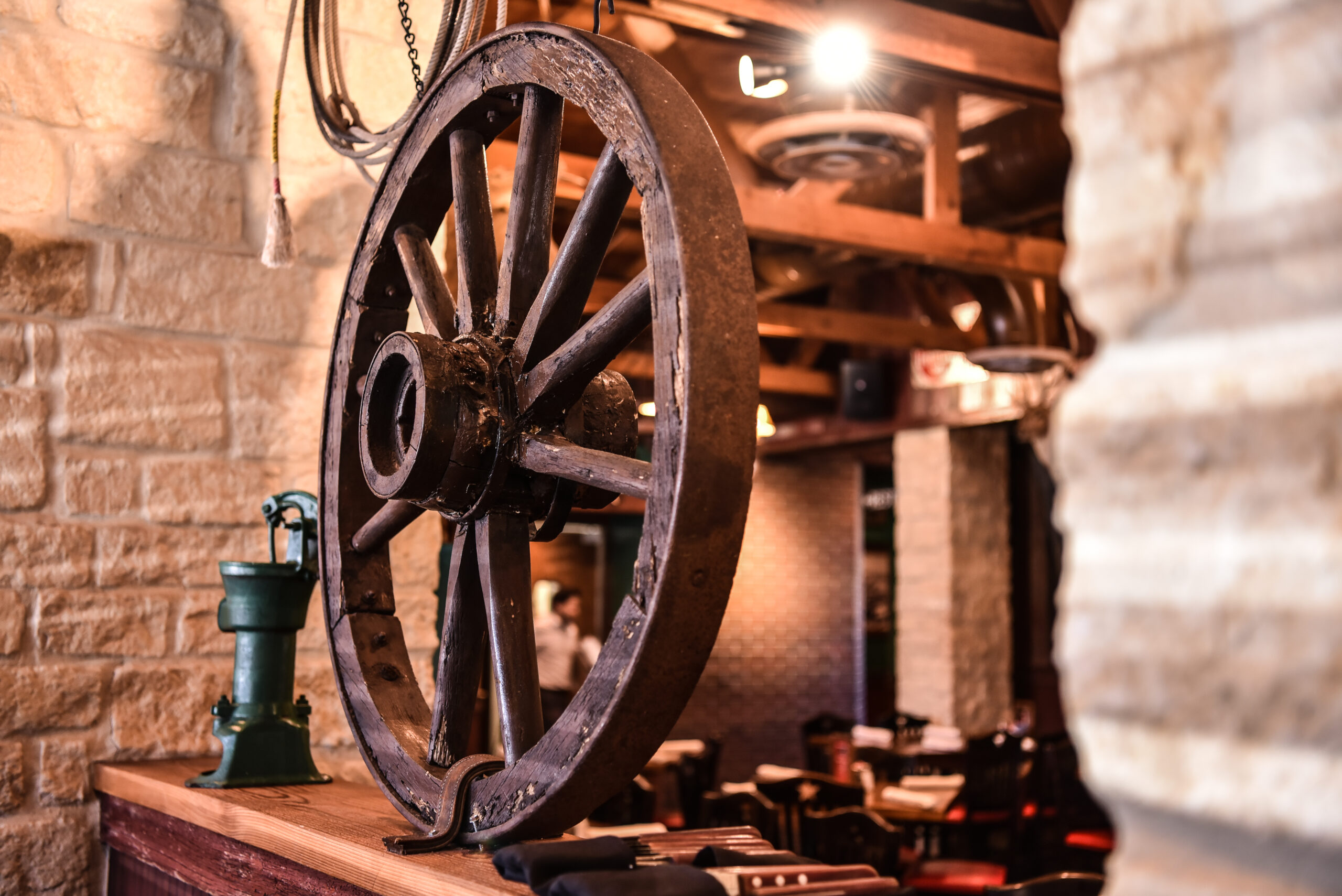
Schools
Most service members without children seek to be as close to downtown as possible for the nightlife and younger vibe. Those with children often broaden their search criteria to include communities with well-liked schools in affordable neighborhoods. Compare data from different websites, but recognize that the measurements don’t always show the entire picture. Look at the school or district’s report card from the Texas Education Agency. Interview potential schools. Talk to the base or regional School Liaison Officer. Take into account all of the factors that could influence test scores but aren’t necessarily reflective of the quality of education (i.e., a high percentage of students whose primary language isn’t English).
There are three independent school districts in the San Antonio area that have shared boundaries with military installations. Fort Sam Houston ISD, Lackland ISD, and Randolph Field ISD operate under the jurisdiction of the Texas Education Agency. Students who live on the respective JBSA installations may attend these schools, but if you live off base, you have to apply for a waiver for transfer acceptance. These schools are not DoDEA schools, but public schools. Off base, there are 23 independent school districts that serve military-connected students in the San Antonio area. We recommend contacting the JBSA School Liaison Office to help learn more about education options for your child.
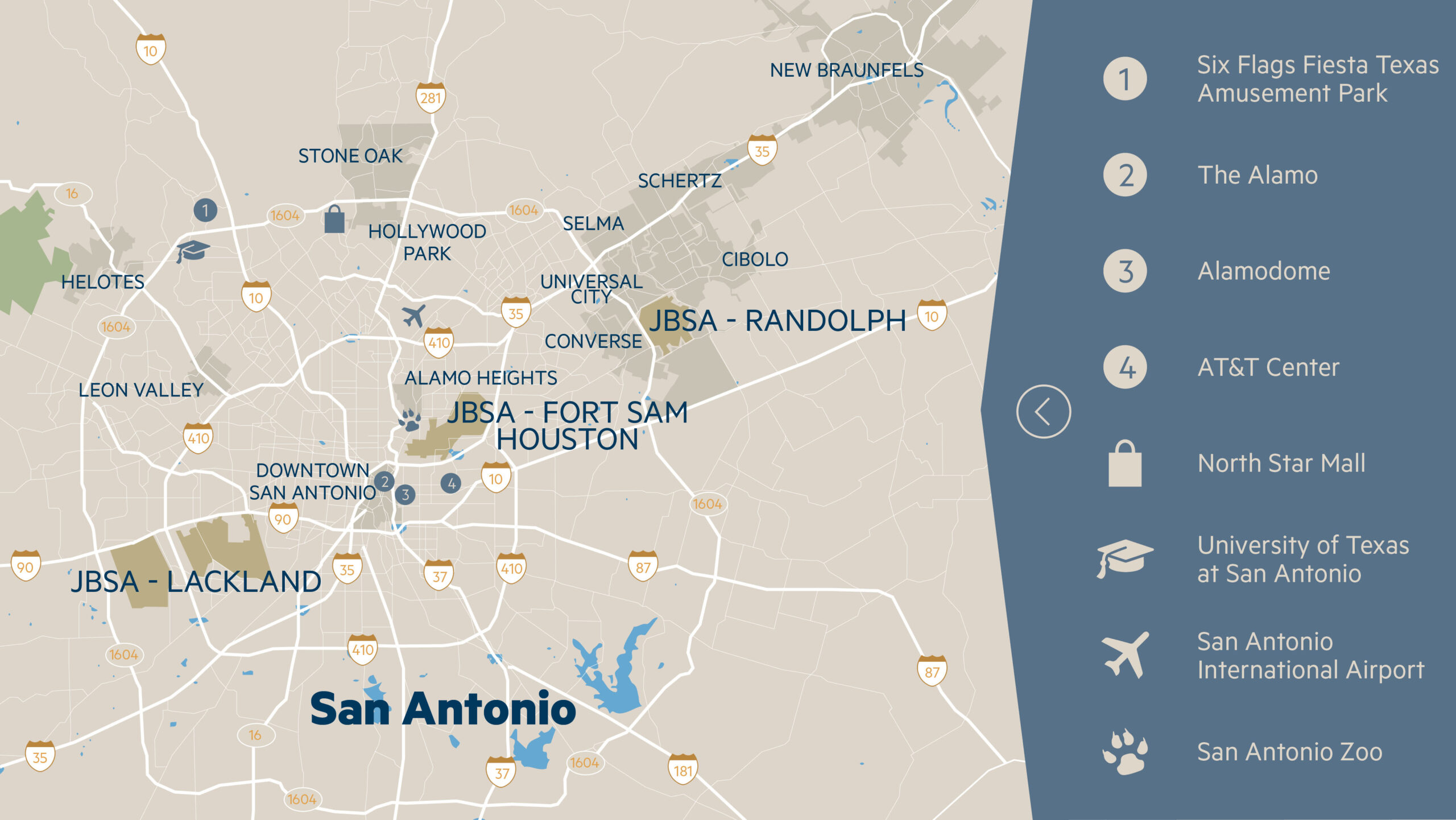
Looking at relocating?
Enter your information below and we will reach out to help the process.
Nearby Neighborhoods
Nearby Neighborhoods
Northeast
About
Welcome to the ‘burbs. Northeast is an extremely popular area for San Antonio families, especially those of the military variety. JBSA-Randolph is tucked neatly within its borders, and there are several affordable surrounding towns that provide an array of neighborhood styles and amenities to choose from. Northeast is outside Loop 410 and is bounded by Interstates 10 and 35, which cut through San Antonio. Affordable homes, abundant shopping and dining options, and a less hectic pace of life are all draws for this area.
Neighbors
Northeast San Antonio engulfs JBSA-Randolph and is a short drive to JBSA-Fort Sam Houston as well. You’ll find a ton of military families in this suburban area who are looking for the most bang for their buck. There’s a friendly mix of locals and military of all ages and stages of life.
Neighborhood Feel
Northeast towns boast space, trees, and even some wildlife, yet also offer easy access to big-city amenities. You can find the best of both worlds here at affordable prices. Homes are traditional, two-story, single-family houses with decent yards in cozy neighborhoods.
Commute
The five smaller communities directly bordering JBSA-Randolph are attractive to many for the affordable homes and short commute—averaging about 10 to 15 minutes. Nearby New Braunfels offers the perks of city living, but with a longer commute to JBSA-Randolph of about 30 minutes.
Converse
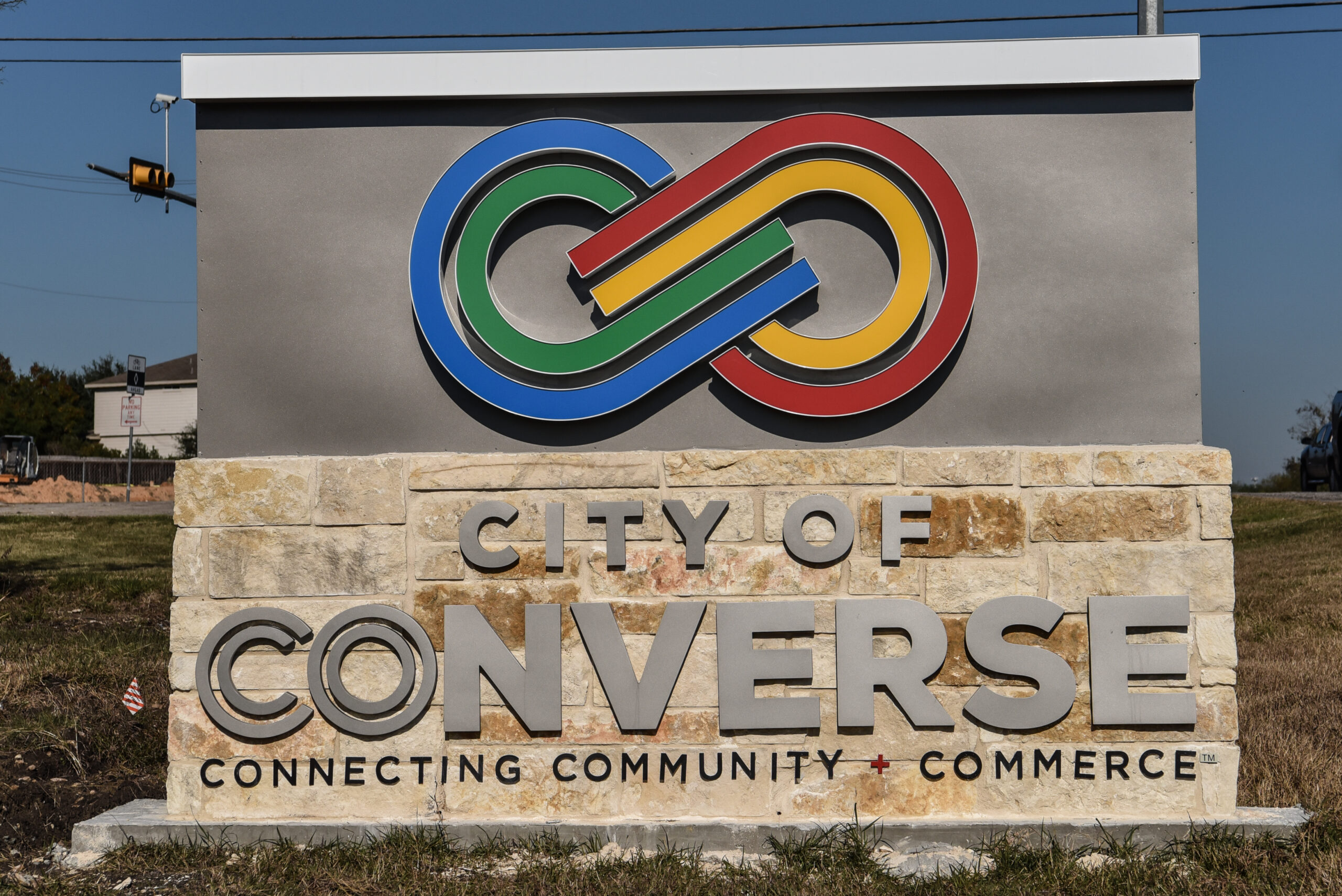
Converse began as a small farming community, settled by German farmers, on the fringes of vast, open country. Today, there are still stretches of undeveloped land, but they’re becoming less and less vacant as the city creeps farther out. The housing boom has created a surplus of home inventory that the population hasn’t really caught up to. This high inventory keeps home prices low for the area, and there are plenty of new master-planned communities where you can find brand-new construction.
Converse is a small city adjacent to JBSA-Randolph and is about 15 miles northeast of San Antonio. This town has a bit of the “right outside the gate” reputation, but new developments and retail chains are steadily arriving to serve the community. Proximity to JBSA-Randolph is a big perk, and residents also easily commute to JBSA-Fort Sam Houston. You’ll probably want to also keep in mind that it is right next door to the base, and air traffic is heavy—not to mention loud.
Homes
Single family homes in Converse range from 1,000 to 3,250 square feet, with an average home measuring 2,000 square feet. New homes with modern finishes are found in the subdivisions farther from JBSA-Randolph, and renovated ranches are more common in the downtown City Center.
Commute
The commute to JBSA-Randolph is around 10 to 22 minutes, while the commute to Brooke Army Medical Center is about 18 to 50 minutes. The commute to Fort Sam Houston is about 22 to 55 minutes. Living in Converse provides access to Loop 1604, Interstate 35, and Interstate 10.
Schools
The public schools in Converse are part of Judson Independent School District.
Judson Independent School District provides a Military Family and College Readiness Specialist to support military-connected students and their families. There are also JROTC programs at Judson High School (AIR FORCE), Veterans Memorial High School (ARMY), and Wagner High School (ARMY).
JSTEM Academy is a popular science, technology, engineering, and math-focused program located at Judson Middle School.
Cibolo and Schertz
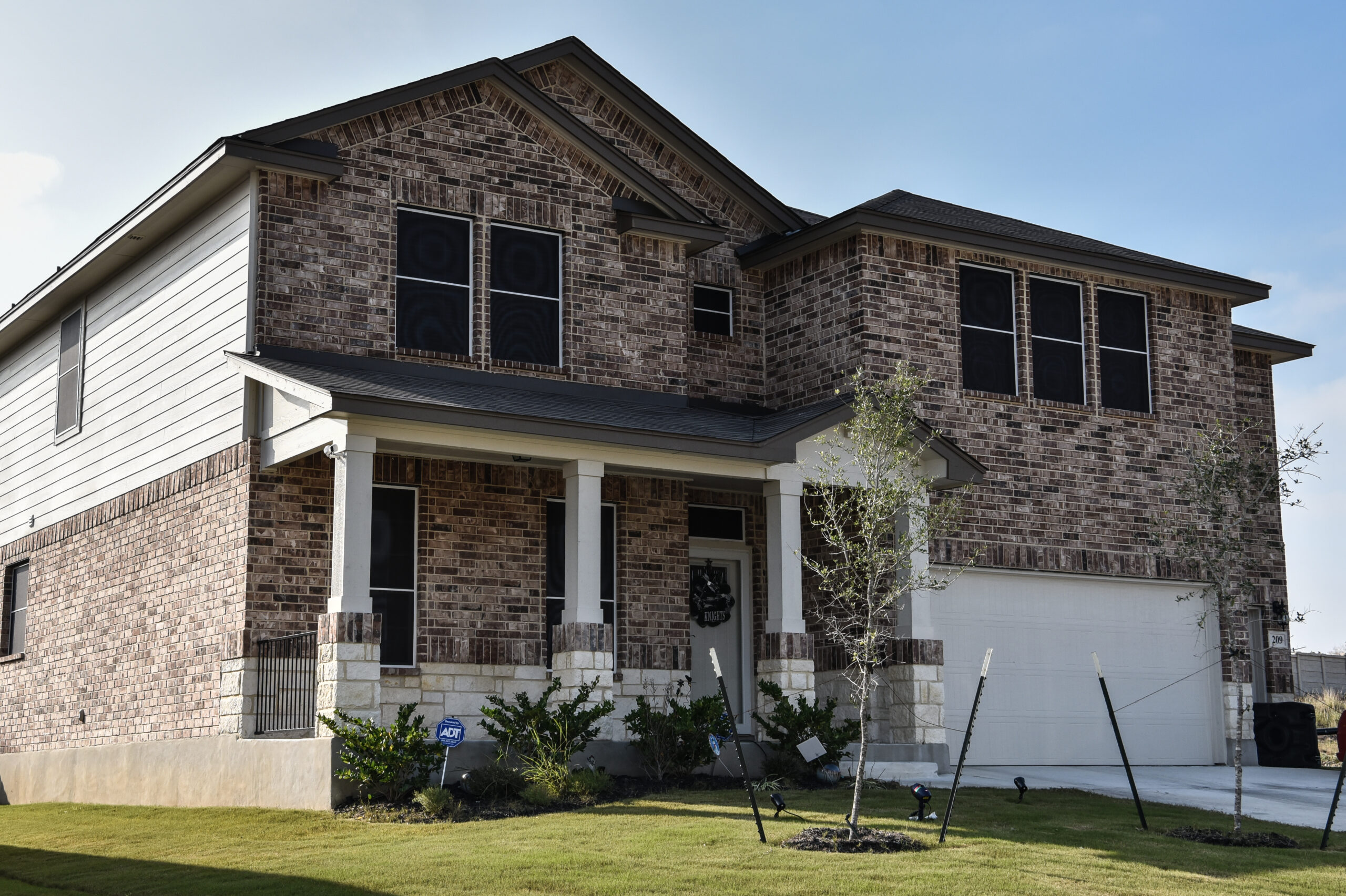
The small towns of Schertz and Cibolo are so tightly intermeshed that they are usually spoken of in the same breath. Schertz occupies a swath of land that stretches from Interstate 10 to Interstate 35, with JBSA-Randolph sharing its western border. Cibolo is nestled in the crook formed by the “C”-shaped Schertz. These two “country-style” towns are very popular with military families because of the proximity to two of the JBSA bases, affordable homes, and quiet pace. You’ll find everything from mini mansions to small single-family homes, along with amenities like parks, playgrounds, and well-lit streets. There is a significant retiree population here, contributing to the rich diversity of the community.
Homes
Single-family homes in Schertz range from 1,100 to 3,775 square feet, with the average home measuring 2,500 square feet. Single-family homes in Cibolo range from 1,150 to 3,550 square feet, with the average home measuring 2,500 square feet.
Commute
Schertz borders JBSA-Randolph on its northern and eastern sides, so commuting is a quick 7 to 15 minutes. Interstate 35 runs along the northern border of Schertz, but getting to the 1604 Loop takes some time. From Cibolo, the average commute to JBSA-Randolph is 12 to 20 minutes. Commuting to JBSA-Fort Sam Houston
Schools
The public schools in Schertz and Cibolo are part of either Schertz-Cibolo-Universal City Independent School District (SCUC ISD) or East Central Independent School District (ECISD).
According to their website, SCUC ISD serves over 3,200 military-connected students and has a full-time Military Student Transition Consultant to assist with resources and counseling needs. Special programs to note at Samuel Clemens High School and Byron P. Steele II High School are the Advanced Placement (AP) courses, JROTC, and the Career and Technical Education (CTE) courses. Samuel Clemens High School has an International Baccalaureate (IB) program. Wilder Intermediate and Schertz Elementary School offer a dual language program.
Special programs in ECISD include Future Farmers of America, full-day Pre-K at three campuses, dual-language programs at every campus, Advanced Placement (AP) courses, and a culinary arts program.
New Braunfels
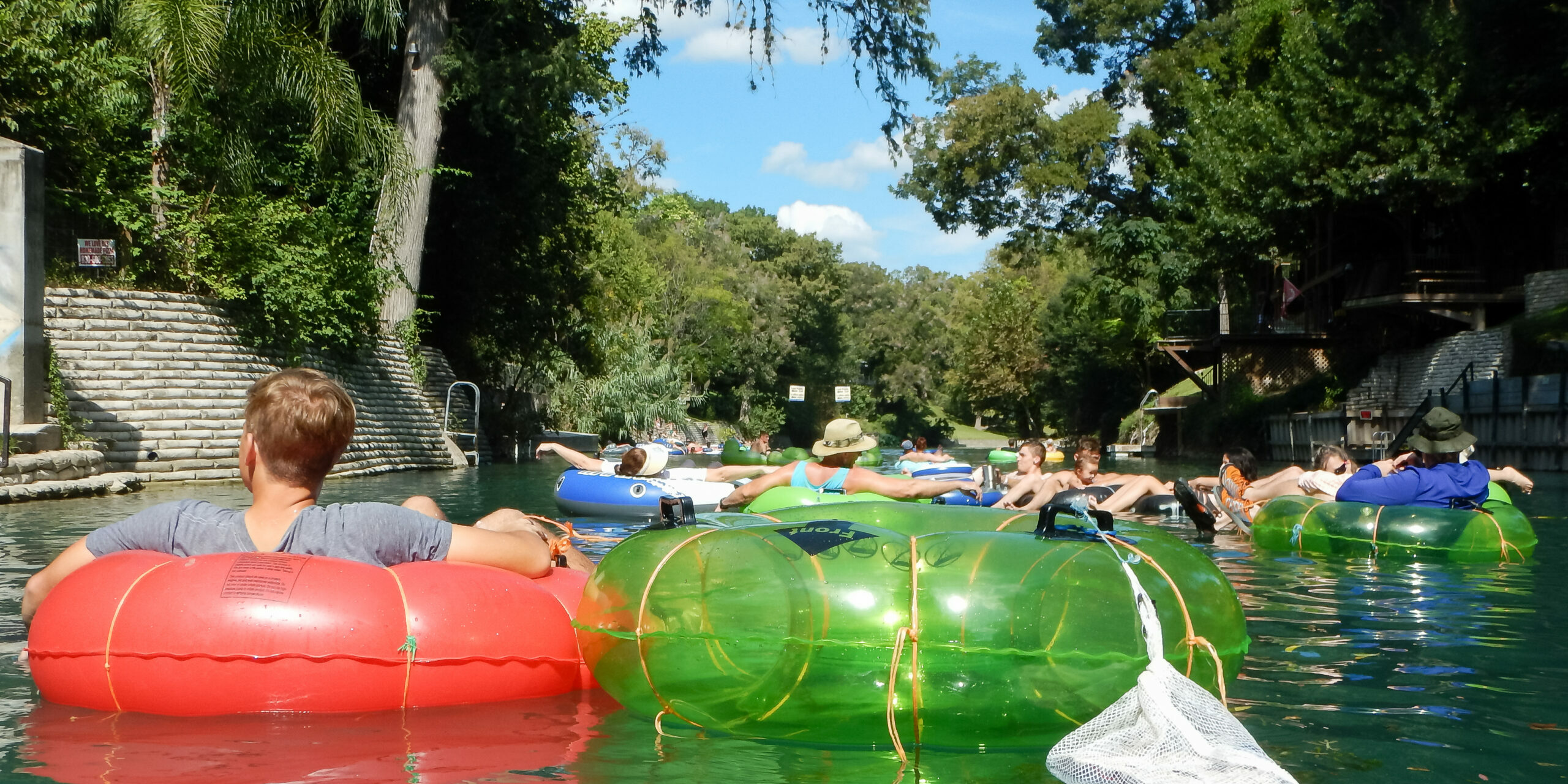
At the edge of Texas Hill Country, New Braunfels offers a family-friendly community with a unique flare. Originally settled by German immigrants, the city has retained its founders’ culture in everything from street names and urban planning to festivals (Wurstfest) and attractions (Schlitterbahn Water Park). This popular tourist destination pulls double duty as a military-friendly community. Two rivers flow through the city, the Comal and the Guadalupe, making tubing and paddle-boating popular summertime activities.
New Braunfels has a great “hometown” feel with a robust downtown. Take your pick from grand historic homes or new construction, gated communities or cozy downtown city streets. Splash pads, parks, lakes, and natural playgrounds are abundant. Highly rated schools, proximity to both San Antonio (25 miles) and Austin (40 miles), and affordable homes are all trade-offs for the longer commute to JBSA installations.
Homes
Single family homes in New Braunfels range from 1,000 to upwards of 4,000 square feet, with the average home being around 2,100 square feet.
Commute
The commute time to JBSA-Randolph is 30 to 55 minutes, while the drive to Brooke Army Medical Center and JBSA-Fort Sam Houston takes 35 to 80 minutes. From here there’s easy access to I-35.
Schools
The public schools in New Braunfels belong to either New Braunfels Independent School District (NBISD) or Comal Independent School District.
NBISD offers special programs for gifted and talented students (GT), dual language, foreign language, bilingual, and ESL learners.
Comal ISD has a Pre-K program that military-connected children can attend at a discounted rate.
Selma
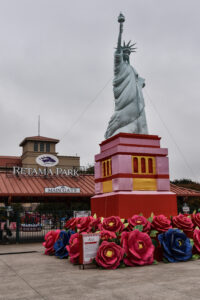
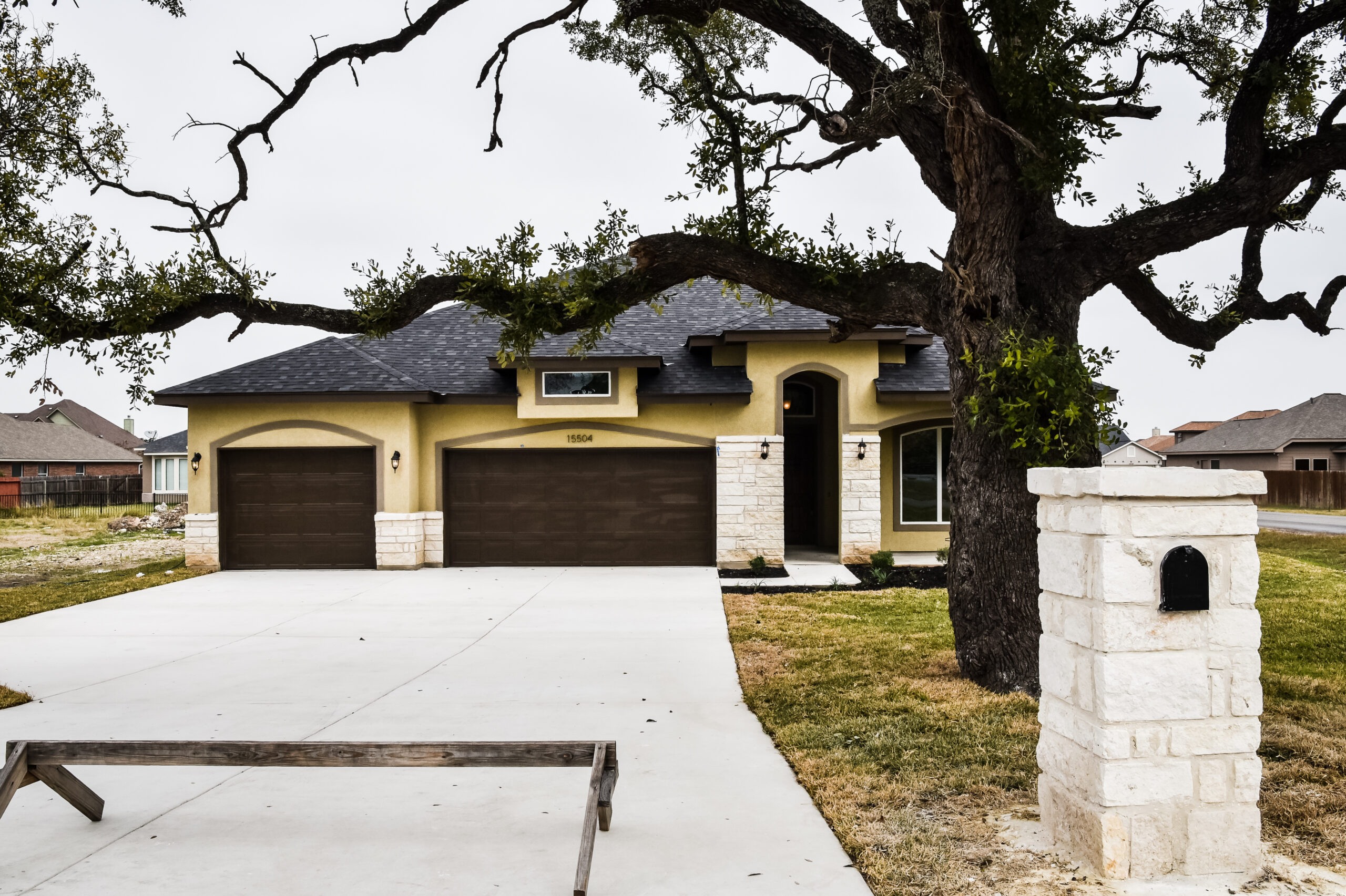
Selma is another little stagecoach-stop-turned-suburban town on the outskirts of San Antonio. Its proximity to JBSA-Randolph and affordable homes make it a popular choice for those who are more price sensitive or maybe just starting out. Most of the houses are a little dated (from the ‘70s and ‘80s), but there are plenty of new builds in modern subdivisions to choose from as well. Staples like Walmart and retail strip malls make for convenient shopping.
Homes
Single-family homes in Selma range from 1,900 to 3,150 square feet, with an average home measuring 2,400 square feet.
Commute
Commuting to JBSA-Randolph only takes around 10 to 25 minutes. Driving to JBSA-Fort Sam Houston and Brooke Army Medical Center can take anywhere from 20 minutes to an hour depending on traffic, but the city straddles Interstate 35, making it an easy drive south.
Schools
The public schools in Selma are part of Schertz-Cibolo-Universal City Independent School District (SCUC ISD). According to their website, SCUC ISD serves over 3,200 military-connected students and has a full-time Military Student Transition Consultant to assist with resources and counseling needs.
Special programs to note at Samuel Clemens High School and Byron P. Steele II High School are the Advanced Placement (AP) courses, JROTC, and the Career and Technical Education (CTE) courses. Samuel Clemens High School has an International Baccalaureate (IB) program. Wilder Intermediate and Schertz Elementary School offer a dual language program.
Universal City
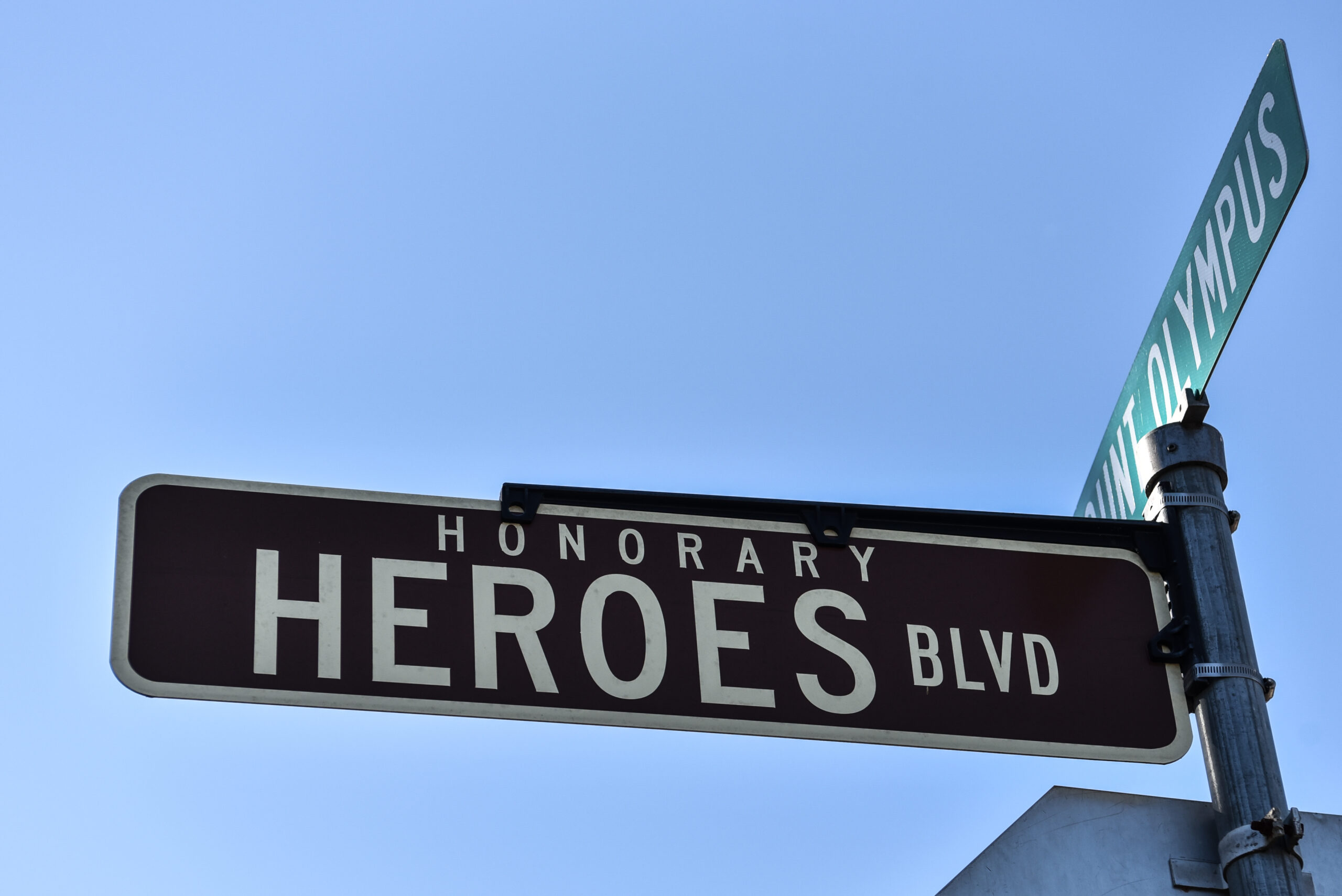
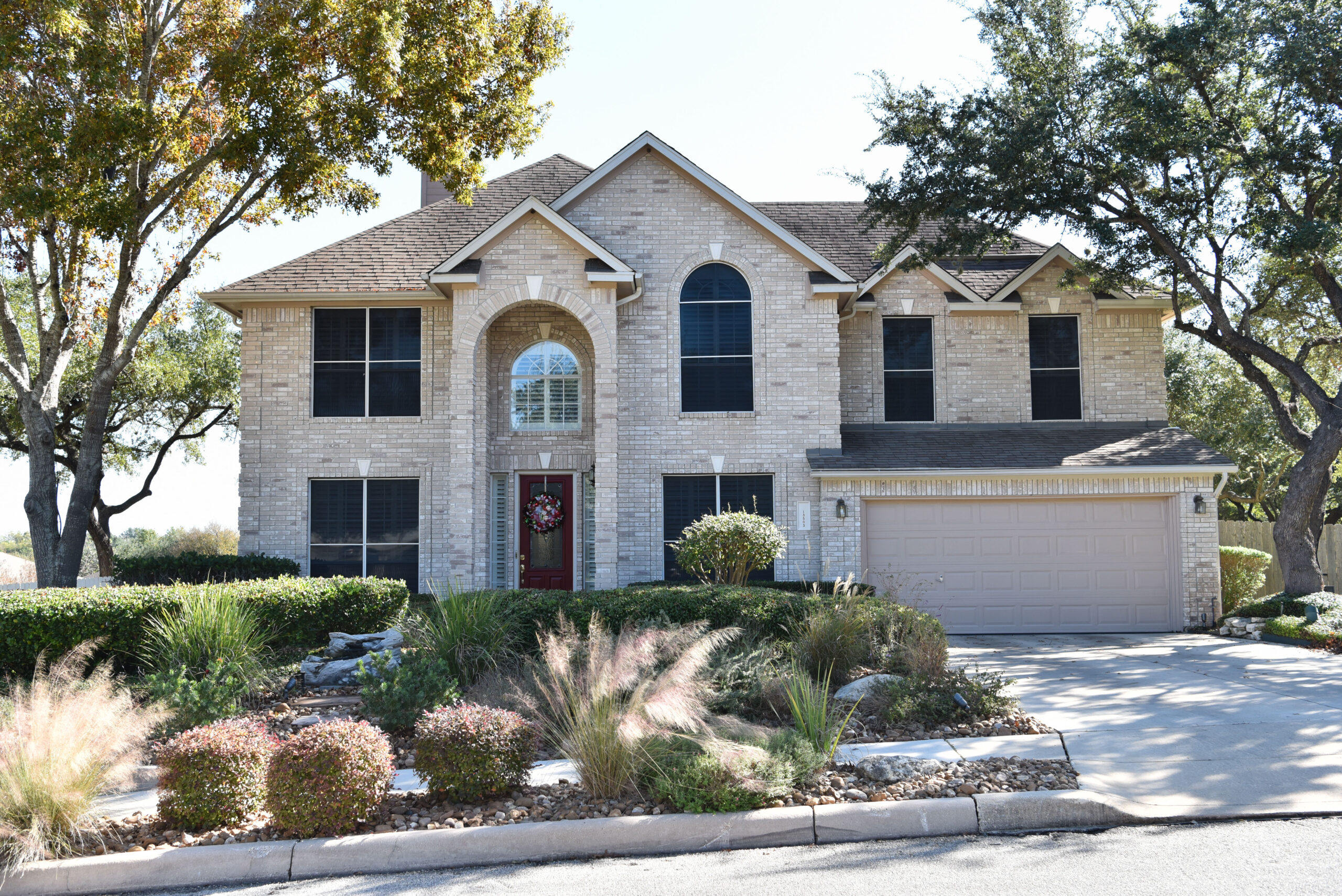
This affordable city is adjacent to JBSA-Randolph, Converse, Live Oak, Selma, and Schertz. Universal City began as a stagecoach stop, but today it’s a commercial hub. The town is constantly expanding, and everywhere you look you can see construction projects underway. Hopes are high that this will increase access to housing options and shopping for residents.
Like Converse, this town has a bit of the “right outside the gate” reputation. Proximity to JBSA-Randolph is a big perk, and residents also easily commute to JBSA-Fort Sam Houston. You’ll probably want to also keep in mind that it is right next door to the base, and air traffic is heavy—not to mention loud. Military officials have issued warnings of potential accident zones in Universal City. Developers are inching closer and closer to the base, which could be a concern in the unlikely event of an aircraft crash.
Homes
Single family homes in Universal City range from 1,050 to 3,350 square feet, with the average home measuring 2,300 square feet.
Commute
Universal City directly borders JBSA-Randolph to the North, and the commute is only 6 to 10 minutes. Driving to JBSA-Fort Sam Houston or Brooke Army Medical Center takes about 20 to 50 minutes, depending on traffic. Living here provides access to Interstate 10, Interstate 35, and Loop 1604.
Schools
Public schools in Universal City are in Judson Independent School District.
Judson Independent School District provides a Military Family and College Readiness Specialist to support military-connected students and their families. There are also JROTC programs at Judson High School (AIR FORCE), Veterans Memorial High School (ARMY), and Wagner High School (ARMY).
JSTEM Academy is a popular science, technology, engineering, and math-focused program located at Judson Middle School.
Area Info | Northeast

Points of Interest
- The Forum at Olympia Parkway (Selma)
- Schlitterbahn East (New Braunfels)
- Retama Park (Selma)
- Converse City Park
- Crescent Bend Nature Park (Schertz)
- Veteran’s Memorial Park (Cibolo)
- Universal City Trails
- Gruene Historic District (New Braunfels)
Big Plus
- Shopping in Northeast is robust with options like the Forum, one of San Antonio’s largest shopping centers, and Rolling Oaks Mall.
- Commuting to JBSA-Randolph is easy from most of Northeast San Antonio. Getting to JBSA-Fort Sam Houston is also reasonable.
- Northeast homes and neighborhoods offer the most “bang for your buck” in the area. Enjoy the calm of the suburbs with the perks of the big city nearby.
- Living in Northeast puts you closer to Austin, particularly if you go as far as New Braunfels. Northeast also lies at the edge of the beautiful Texas Hill Country.
Things to Consider
- Living near any military installation comes with certain auditory side effects, and the air is swarming with military aircraft in San Antonio. Living in the Northeast will be accompanied by air traffic from JBSA-Randolph. There are also a few designated “Accident Potential Zones” in areas near the runways.
- Texas is hot. Like, sweltering hot. San Antonio has the added perk of experiencing humidity as well, so acclimate as quickly as you can. On the plus side, you can count on over 200 days of sunshine a year and relatively mild winters—as in rarely drops below freezing!
- San Antonio is a sprawling city. What it lacks in height, it makes up for in circumference. The two interstate loops that
encircle the city and the various highways that pass through it help with getting around, but it still takes time. Be conscious of how far you choose to live from the center of town (downtown) and how that will affect the amount of time you or your spouse will be spending in the car.
Highlighted Areas
- Converse – MacArthur Park, Rolling Creek, Scheel Farms
- Selma – Kensington Ranch, Selma Park Estates
- Schertz – North Cliff, The Estates at Mesa Oaks
- Cibolo – Fox Brook, Cibolo Vista
- Universal City – Olympia, Coronado Village
- New Braunfels – Legend Point, Magnolia Springs
- Riverside Gardens
- Stratford Landing
- Collingwood
- Kingstowne and its many subdivisions
Northwest
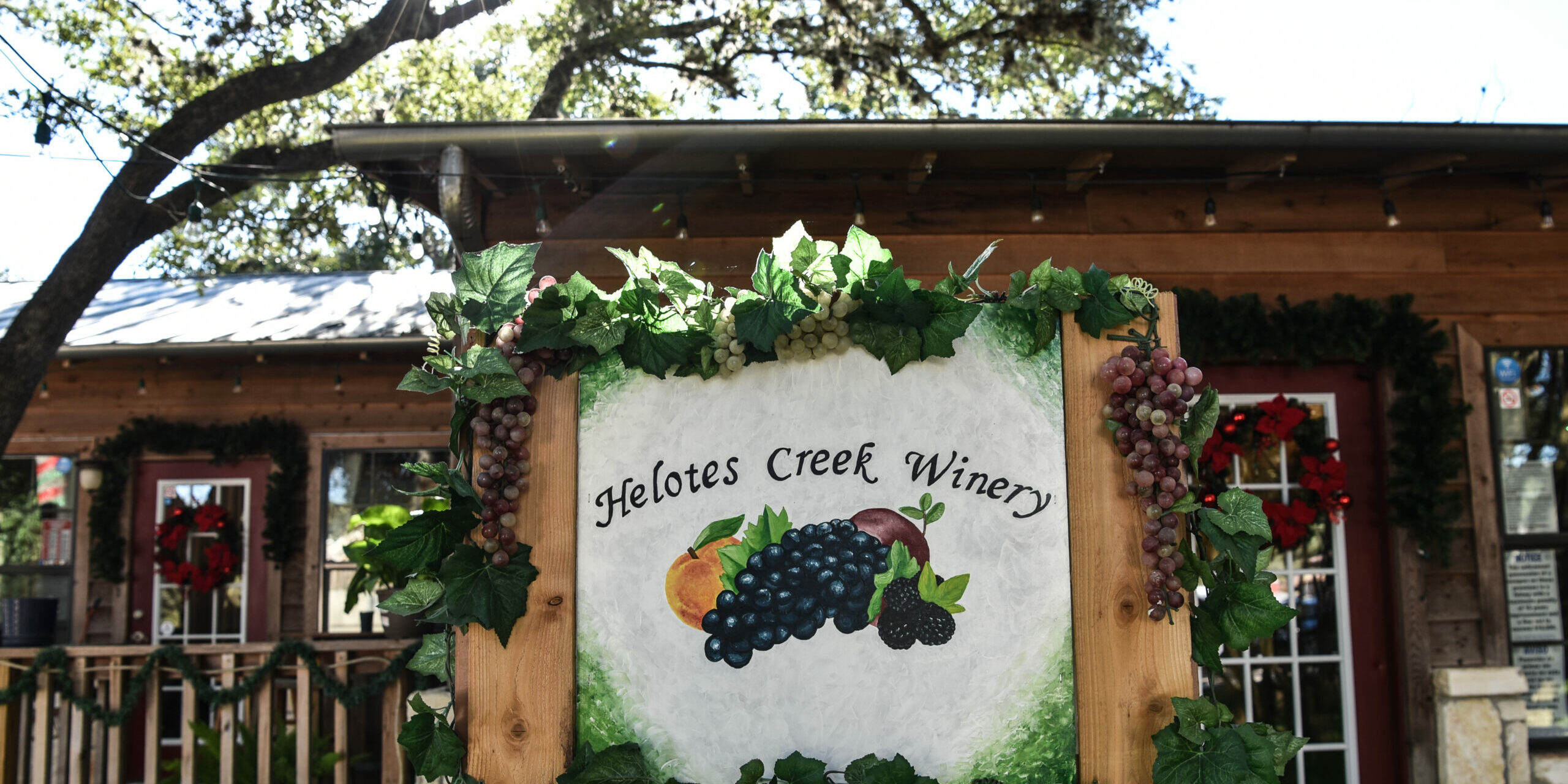
About
Northwest San Antonio is where folks go to get away from the hustle and bustle of the Alamo City. This outlying area offers the best of both worlds: rural, yet with access to plenty of shopping and entertainment, and quiet neighborhoods close to some of the area’s largest employers. Bounded by Loop 1604, Northwest is at the outer edge of San Antonio and enjoys views of the stunning Texas Hill Country. While still very suburban, Northwest has a more rural feel. It’s not uncommon for homes to sit on acres of land and for horses to roam in Northwest.
This business hub is home to several major corporations and military-friendly businesses like USAA, NuStar Energy, and Valero. The Northwest also includes the University of Texas at San Antonio, the University of Texas Health Science Center at San Antonio, and the Northwest Campus of the University of the Incarnate Word, drawing students from all over. The La Cantera District, a master-planned development with a renowned shopping center, and Six Flags Fiesta Texas are also here, as well as two other popular shopping centers.
You’ll find most military commuters in Northwest stationed at JBSA-Lackland. Living in this area makes it easy to hop on one of the loops and reverse commute, while most of your neighbors will be headed east and south into the city. Those stationed at JBSA-Fort Sam Houston or Randolph most likely live elsewhere—that drive in traffic is no joke.
Neighbors
Because of the universities, corporate headquarters, and businesses that anchor in Northwest, many career-minded or degree-seeking spouses gravitate to this area. As with most of San Antonio, you’ll find a good mix of military-affiliated folks and local San Antonians in Northwest.
Neighborhood Feel
Northwest neighborhoods have a rural feel with their spacious lots but are replete with modern suburban amenities like pools, playgrounds, and community centers. There’s a bit more space here, and you’ll find everything from historic bungalows to grand, master-planned communities with brand-new homes. Most communities enjoy the scenic backdrop of the rolling Hill Country.
Helotes
Just outside Loop 1604 lies the quaint town of Helotes (pronounced “heh-LO-tez”). This rugged enclave was once a small farming community but has seen a lot of development in recent years. It is referred to as the “Gateway to Hill Country” and has a distinctly rural feel. Old Town Helotes offers a fully stocked farmers’ market and several independently owned shops and restaurants. You can easily find horse feed, ammo, or tractor tires in Helotes—if you’re so inclined. Walmart and a drive-thru Starbucks are two staple retailers located here if you need a brand-name fix. A short 10-minute drive can deliver you to the nearest Target and Super H-E-B (groceries). Development and city sprawl will surely bring more chains to Helotes in the future.
Perhaps the most famous establishment in Helotes is the John T. Floore Country Store. Originally opened as a dance hall/cafe—not a store—Floore’s is a unique entertainment venue that has attracted renowned musical acts for over 70 years. Legends like Elvis Presley, Patsy Cline, Hank Williams, Merle Haggard, B.B. King, Little Richard, Willie Nelson, and many more have played this iconic honky-tonk.
Family friendly is an understatement in Helotes. It was named “The Best Place to Raise Kids in Texas” by Bloomberg Businessweek in 2013, and it’s easy to see why. Quiet neighborhoods, desirable schools, homes with acreage, events like the summer movie in the park, rodeos, and festivals are all draws to this community.
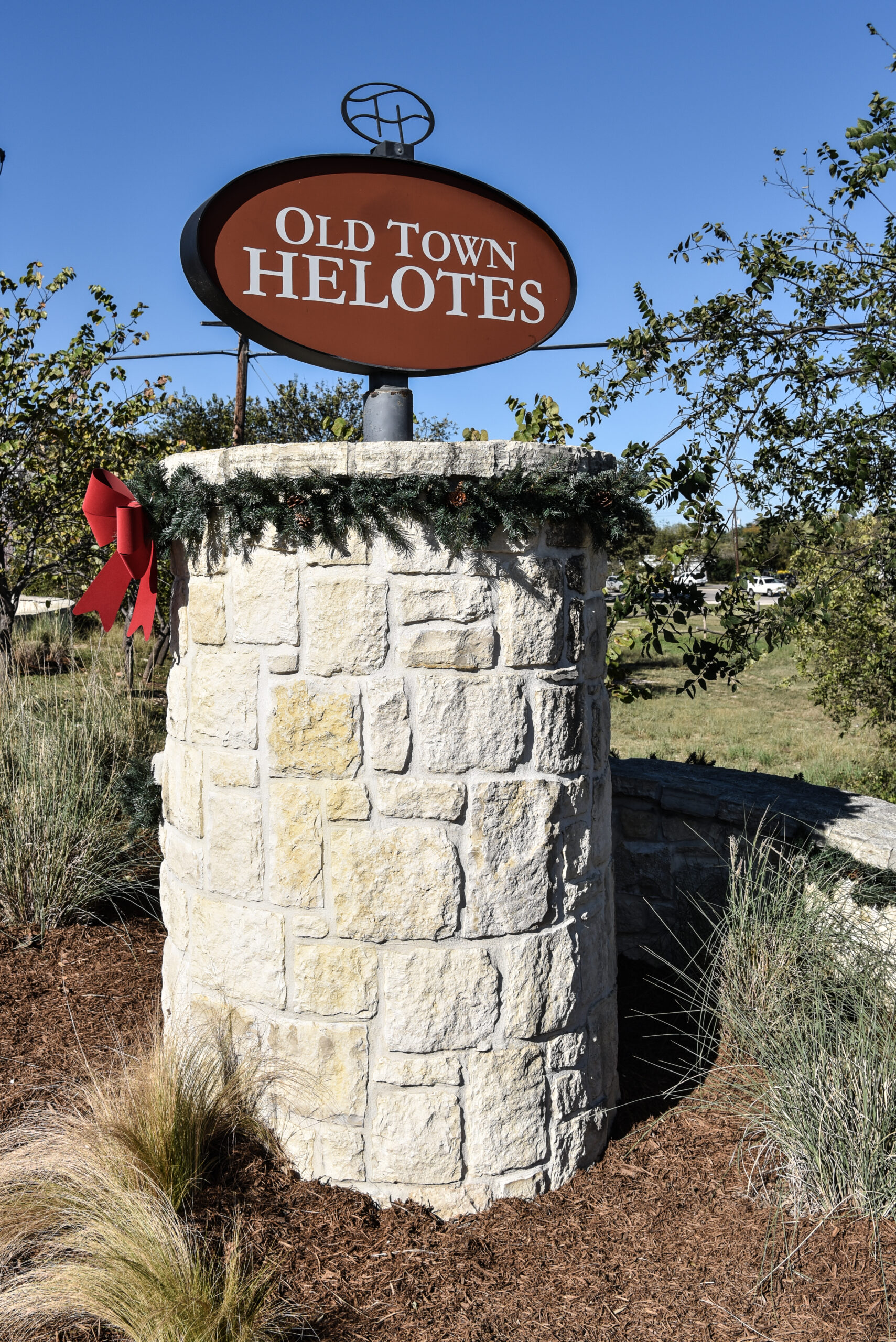
Homes
Single-family homes in Helotes range from about 1,800 to around 4,000 square feet, with the average home measuring 3,000 square feet.
Homes in Helotes are full of charm. Even the new homes are markedly unique—a departure from the ever-present cookie-cutter neighborhoods found elsewhere in the suburbs. Most houses occupy multiple acres, and having a horse instead of a dog in the yard isn’t uncommon.
Commute
The commute time to JBSA-Lackland is about 24 to 80 minutes and 35 to 90 minutes to JBSA-Fort Sam Houston and Brooke Army Medical Center. Living in Helotes provides quick access to Loop 1604 Interstate 10 but can be considered “a hike” to most of the JBSA installations.
Schools
The public school in Helotes belongs to Northside Independent School District. Helotes Elementary School is sought-after and the middle and high schools that draw from Helotes are as well.
Northside Independent School District provides an array of services for the over 7,000 children with military-connected parents in the district. Some interesting offerings for military families to note include a free Pre-K program for military kids, military pride clubs, guidance counselors with access to training specific to challenges military children face, and a task force that meets quarterly to discuss concerns and resources available to military families.
Leon Valley
Leon Valley is an insulated town that lies bit closer to the city center than Helotes, inside the Loop 1604 (outer loop) and adjacent to Loop 410 (inner loop). It’s secluded, yet close to everything. Wildlife sightings in quiet neighborhoods are common, yet it’s only a 10-minute drive to almost anything you could need by way of work, shopping, dining, and entertainment.
Homes
Single-family homes in Leon Valley range from about 1,300 to 3,026 square feet, with the average home measuring around 1,925 square feet.
Commute
The commute time to JBSA-Lackland is 18 to 40 minutes, while the commute to JBSA-Fort Sam Houston and Brooke Army Medical Center is 20 to 75 minutes, depending on traffic. Getting to JBSA-Randolph takes 30 to 90 minutes. Living in Leon Valley provides quick access to Interstate 10 and Loop 410.
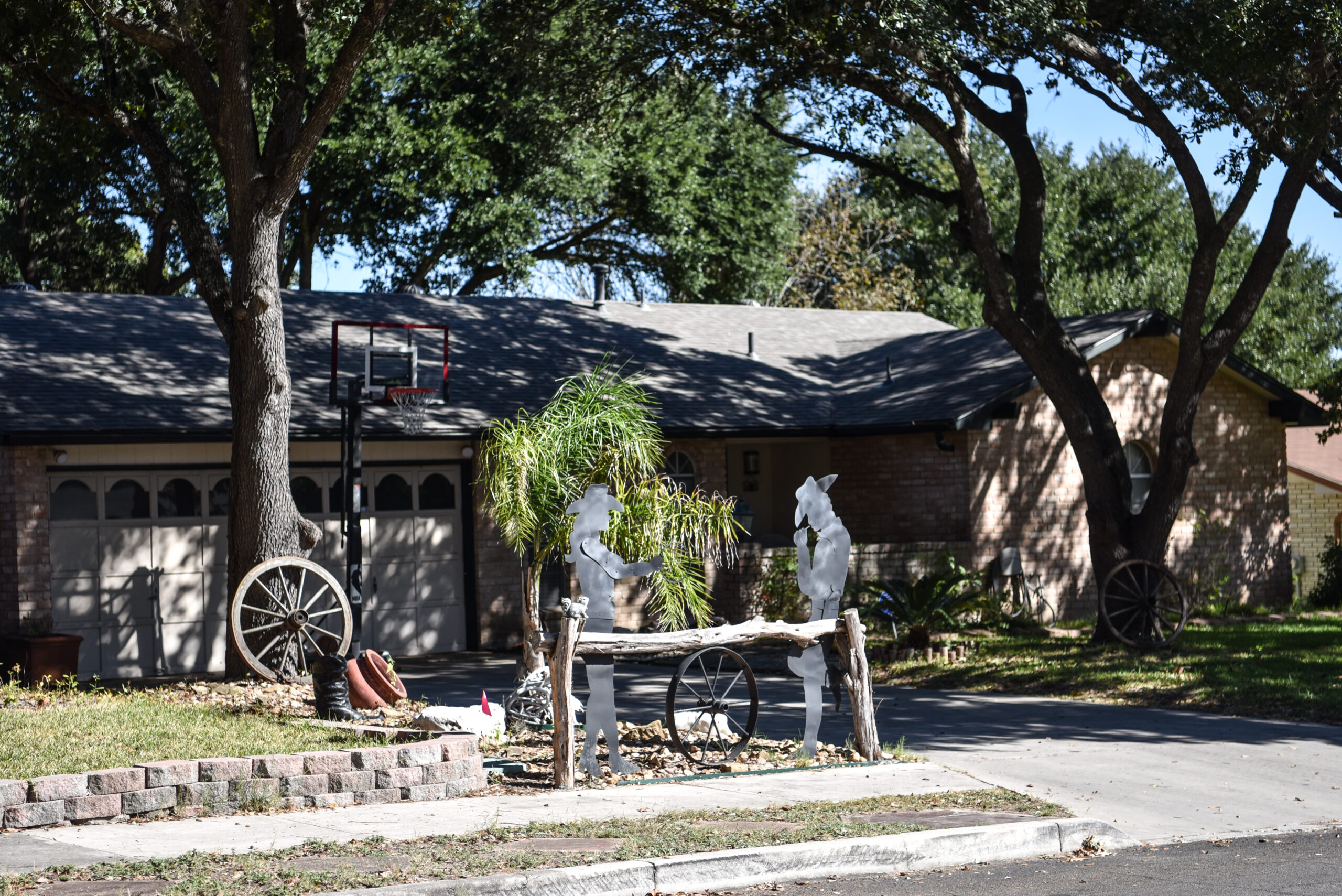
Schools
Public schools in Leon Valley belong to Northside Independent School District. One of the most popular schools is an open-enrollment charter school, the School of Science and Technology Discovery (SST). It is essential to thoroughly research the school you are zoned for and assess all the options available to ensure a good fit for your student.
SST requires an application to be considered for admission. Mark your calendar for January 10 through March 15—the application window for the upcoming school year. If the school fills up, a lottery will determine acceptance. They offer programs for gifted and talented (GT) students, English language learners, students with special needs, and students with dyslexia, as well as Science Olympiad teams, art program, and First LEGO League teams, but do not offer any bus transportation, so you’ll need to drive your children no matter where you live.
Northside Independent School District provides an array of services for the over 7,000 children with military-connected parents in the district. Some interesting offerings for military families to note include a free Pre-K program for military kids, military pride clubs, guidance counselors with access to training specific to challenges military children face, and a task force that meets quarterly to discuss concerns and resources available to military families.
Area Info | Northwest
Points of Interest
- Six Flags Fiesta Texas
- The Shops at La Cantera
- The Rim Mall
- The University of Texas at San Antonio
- Raymond Rimkus Park (Leon Valley)
- Historic Huebner Home (Leon Valley)
- John T. Floore’s Country Store (Helotes)
- San Antonio Aquarium
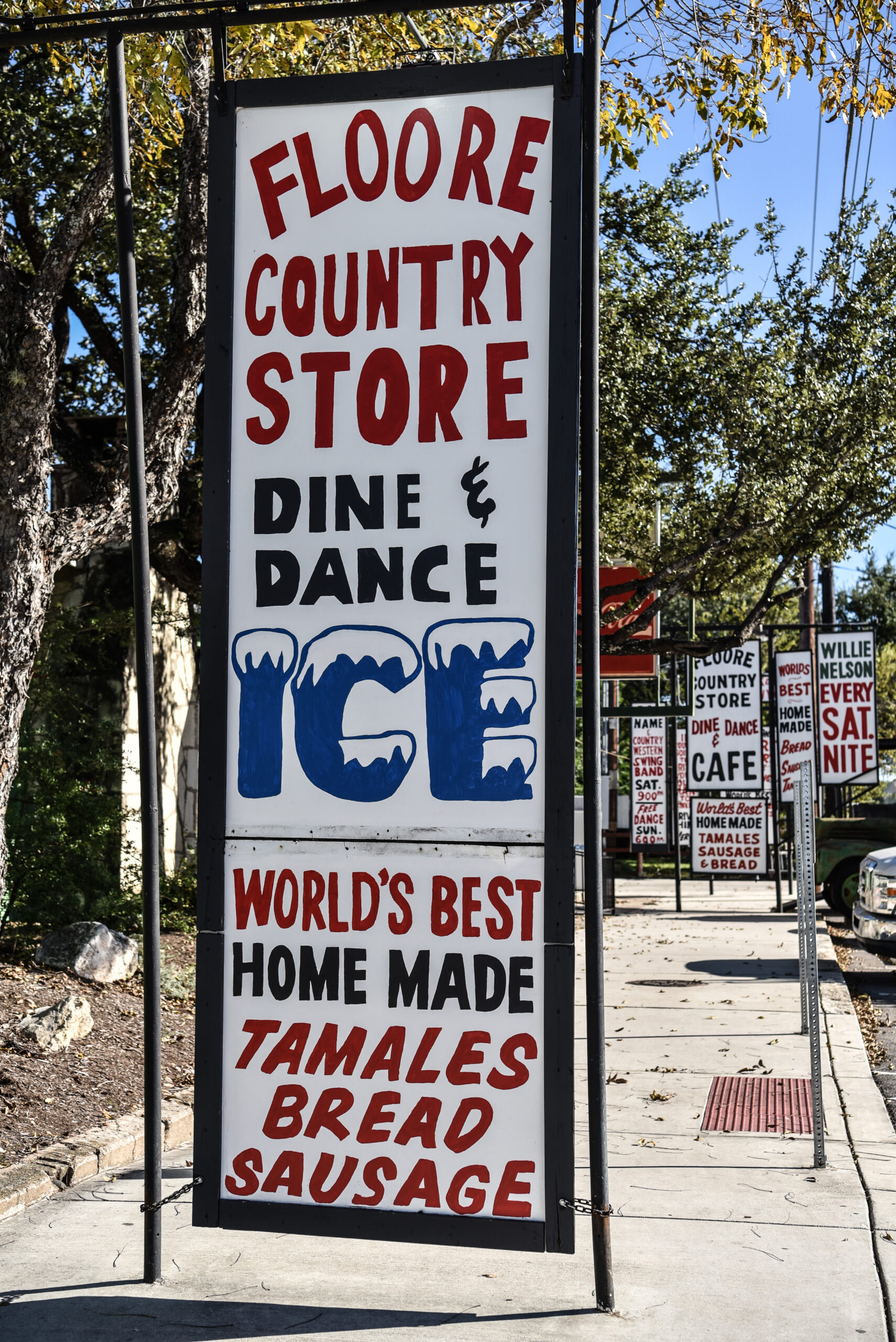
Big Plus
- Northwest has an awesome job market and exploding economy. Some of the state’s most well-known employers are based here, and they love to hire military spouses and veterans.
- You can live in peaceful communities with breathing room, yet still be close to all the shopping, dining, and entertainment options you can imagine.
- As with most of San Antonio, homes here are relatively affordable. Your money can go a little further in Northwest than it does downtown or in Stone Oak.
- If you want to get away from the light pollution and the hustle and bustle of the city, the open spaces in Northwest will feed your soul. You can easily find a home with acreage, and if keeping horses is your thing, this is your place.
Highlighted Areas
- Helotes – Iron Horse Canyon, Helotes Crossing
- Leon Valley – Forest Oaks
Things to Consider
- Northwest is one of the most outlying areas in the San Antonio metro area and is considered to be quite far from the JBSA installations. Access to the loops that skirt the city help with getting to and from JBSA-Lackland and Randolph, and it is very close to Camp Bullis (training area), so those who will be spending time there should consider it.
- Texas is hot. Like, sweltering hot. San Antonio has the added perk of experiencing humidity as well, so acclimate as quickly as you can. On the plus side, you can count on over 200 days of sunshine a year and relatively mild winters—the temperature rarely drops below freezing!
- San Antonio is a sprawling city. What it lacks in height, it makes up for in circumference. The two interstate loops that encircle the city and the various highways that pass through it help with getting around, but it still takes time. Be conscious of how far you are choosing to live from downtown and how that will affect the amount of time you or your spouse will spend in the car. Northwest is sheltered from some of the hustle and bustle areas “inside the loop” have to deal with, but the city is steadily creeping outward.
San Antonio Proper
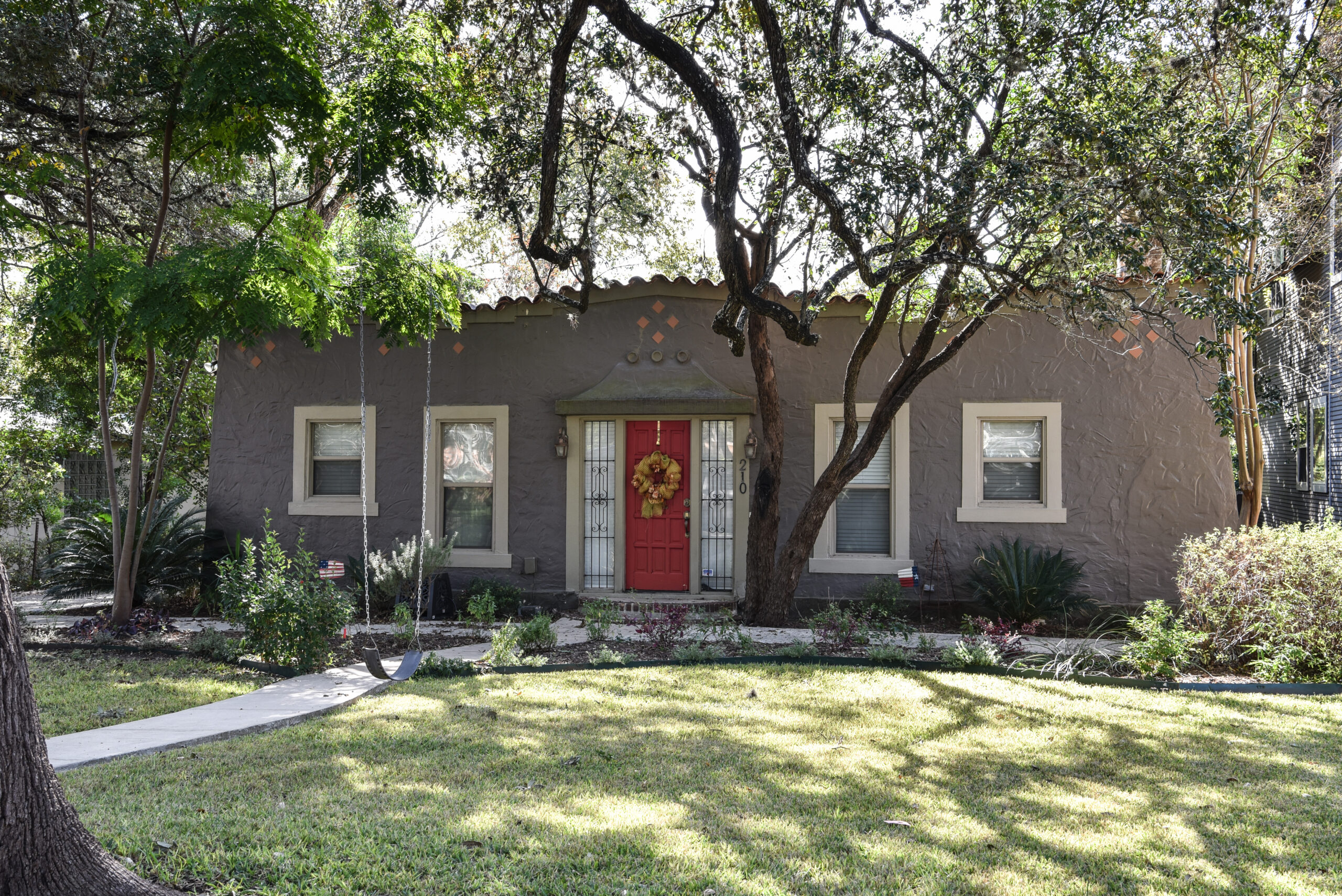
About
Radiating north from the nucleus of downtown, the area we’re dubbing “San Antonio Proper” is bounded by Interstates 10 and 35. Locals would refer to the areas within as North, Central, and Far North Central. Close to downtown, here you’ll enjoy bustling city life, yet at a more comfortable pace. Older, more established neighborhoods attract many families who are looking for charm and character yet wish to remain plugged into the city. As you radiate north, things slow down slightly and start to spread out. By the time you reach the outer loop (Texas State Highway 1604), the ‘burbs emerge with sparkly-new everything, with manicured green spaces and gated communities galore.
The Alamodome and the AT&T Center are hubs of excitement with events, concerts, and sporting events. The San Antonio Zoo is a family favorite, and you can get your arts and culture fill at the Museum of Art. History lovers can get their fix at the Alamo and Mission San Jose. A stroll down the famous River Walk is relaxing and flows with the funky character of old San Antonio. Shopping is robust, with retail options to suit every taste and budget. Restaurants come in all varieties from chains to local eateries.
Neighbors
As with virtually anywhere in the San Antonio metro area, you will be surrounded by service members and their families as well as retirees. You’re more likely to find local San Antonians infused into the neighborhoods of San Antonio Proper than in the suburbs closer to the installations.
Neighborhood Feel
Neighborhoods in San Antonio Proper run the gamut from cramped urban apartments to luxe suburban enclaves—all of it with a Southwestern flare.
Alamo Heights
Roughly five miles north of downtown lies the quiet, affluent enclave of Alamo Heights. San Antonio’s old money is on display with the large, unique, and often historic homes. Mature trees line the sidewalks, and trendy, independent shops and restaurants adorn the larger thoroughfares. Established locals love the schools, small-town vibe, and proximity to downtown. Higher-ranking and dual-income military families are lured in by the short commute to JBSA-Fort Sam Houston. Shopping, culture, and amenities are close at hand with upscale shopping centers, an H-E-B Market, and an art museum.
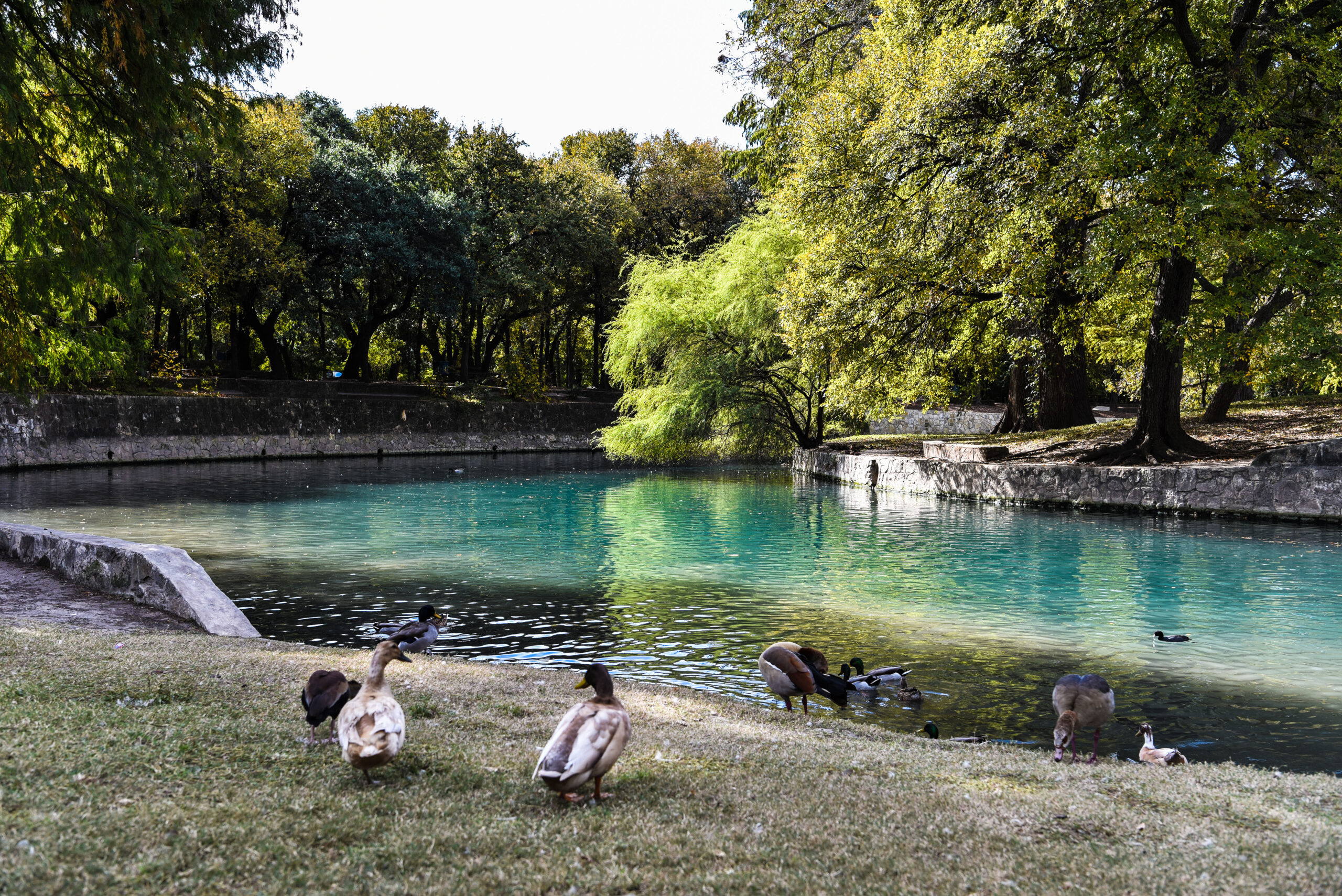
Homes
Single-family homes in Alamo Heights range from about 1,175 to over 12,000 square feet, with the average home measuring around 3,300 square feet.
The homes here are bursting with character and charm and are much more expensive than what you will find in the suburbs. You’ll be sacrificing your budget to live close to the base in a large, beautiful home in a desirable school district.
Commute
The commute to JBSA-Fort Sam Houston or Brooke Army Medical Center is ideal at around 16 to 40 minutes. While driving to JBSA-Randolph or JBSA-Lackland will take longer, Alamo Heights’ central location provides a reasonable commute to either base (25 to 45 minutes). From here, you have quick access to US Highway 281, Interstate 35, and the Interstate 410 Loop. Alamo Heights is inside the Interstate 410 Loop, the innermost loop around the city.
Schools
Public schools in Alamo Heights are in Alamo Heights Independent School District.
Alamo Heights ISD boasts extremely high graduation rates and consistent national recognition. Though the district does allow a limited number of out-of-district transfers, you will need to pay tuition if accepted. Bus service is available as long as you live farther than two miles away from your child’s campus.
Special programs of note in the district include the award-winning JROTC program at Alamo Heights High School; the Spanish immersion and dual language programs at Cambridge Elementary School, Woodridge Elementary School, and Alamo Heights Junior School; and the Pre-Kindergarten and dual language program offered at Howard Early Childhood Center.
Downtown San Antonio
Downtown San Antonio is the heart of the metropolitan area, and pulses with history, tourism, and commerce. Breweries, the River Walk, the Alamo, the Alamodome, shops, restaurants, entertainment, and countless cultural events keep residents and visitors alike busy year-round. Like most urban cores, inhabitants tend to be younger, single, and childless and flock to the lively nightlife, concerts, and chic restaurants. The vibrant Hispanic influence in the city breathes through the art, architecture, music, and food.
Hipster lofts and luxury apartments are available, but there aren’t many single-family homes to be found downtown. The abundance of commercial buildings here lends itself to an industrial feel, and residences occupy the upper floors of businesses, restaurants, and shops. The Pearl District is an enviable spot, so if you can find an available home and downtown living is your thing, jump on it.
Homes
Single-family homes downtown range from about 750 to 1,925 square feet, with the average home measuring around 1,250 square feet.
Commute
Downtown has an ideal commute time to JBSA-Fort Sam Houston, and Brooke Army Medical Center is about 10 to 30 minutes away. The commute to JBSA-Randolph takes 24 to 60 minutes, and it’s an 18- to 35-minute drive to JBSA-Lackland. Living downtown provides quick access to Interstate 10, Interstate 35, Interstate 37, and US Highway 281.
Schools
Public schools downtown are part of San Antonio Independent School District (SAISD).
San Antonio ISD offers advanced academics, including Advanced Placement (AP) and International Baccalaureate (IB) at Luther Burbank High School, Thomas Jefferson High School, Henry Wadsworth Longfellow Middle School, Joel C. Harris Middle School, and Woodlawn Academy.
SAISD has multiple specialized schools that range in style from alternative to charter. The district also offers Choice Schools and Magnet Programs with diverse areas of focus and Academies that employ innovative methods of instruction. There are also a variety of special education programs, including specific support for students with dyslexia and bilingual/ESL students. SAISD has over 90 campuses, including academies that offer a Pre-K program.
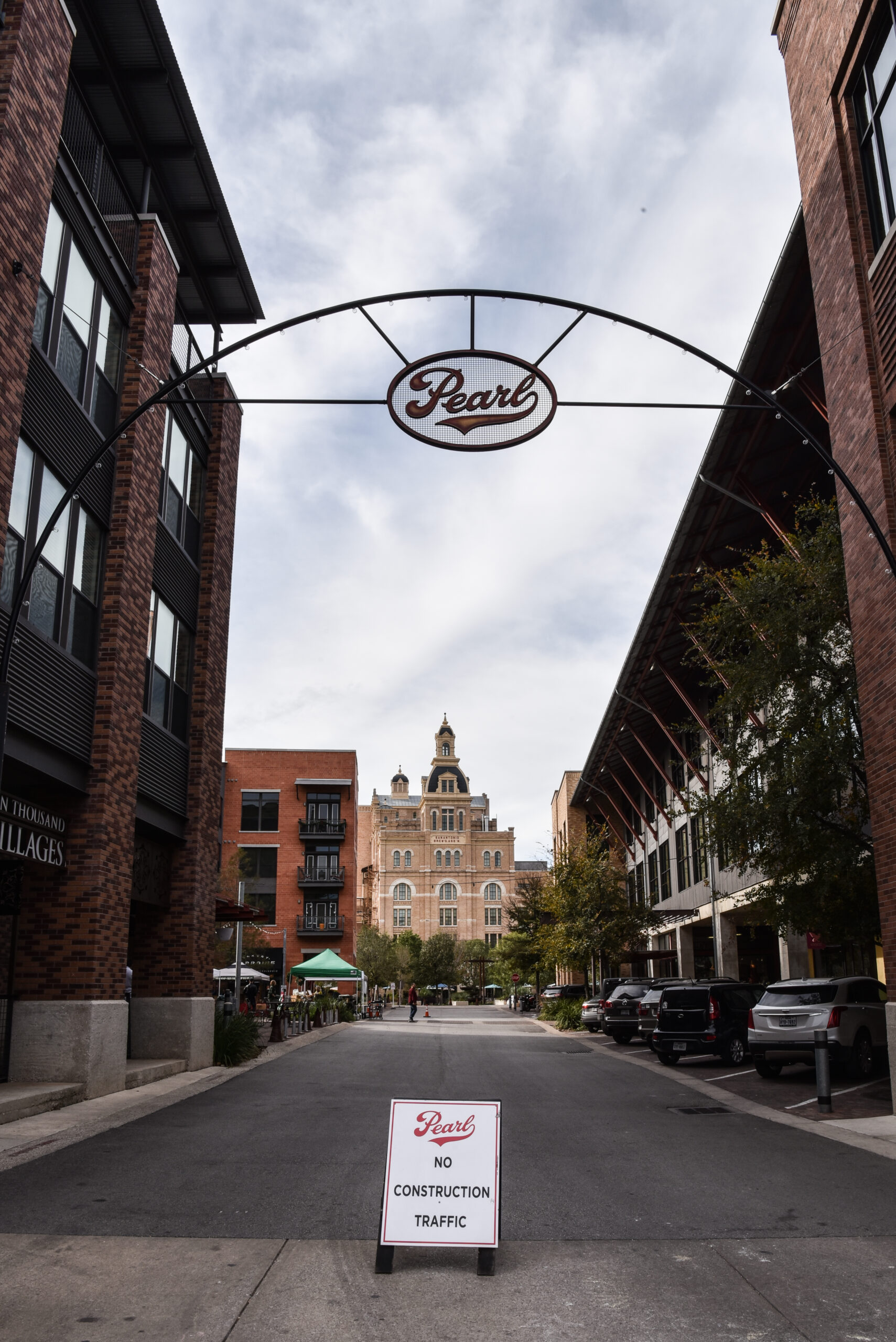
Hollywood Park
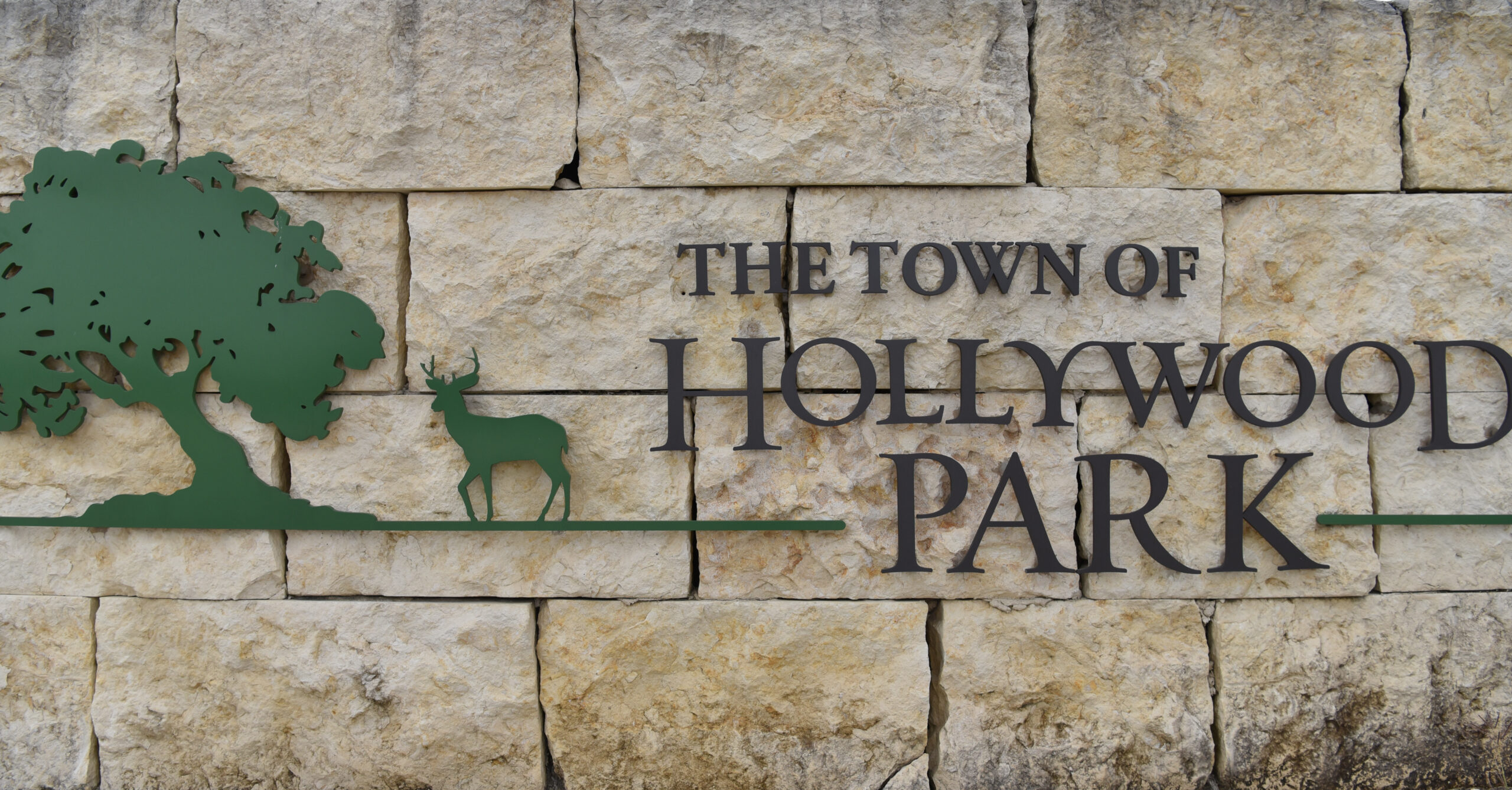
Hollywood Park is a little town in the far north central area of San Antonio. In the 1950s, the residents incorporated to protect their autonomy and insulate their small-town vibe from the sprawling city that was creeping towards them. Located just inside the 1604 Loop, this wealthy enclave has the appearance of being rural with large lots and mature trees, but residents have everything they need at their fingertips. Upscale boutiques, elegant restaurants, and even a Target are close at hand. The community is made up of professionals, executives, designers, and all sorts of highly educated “urban sophisticates.” Higher-ranking and dual income military families are attracted to this area for the top-rated schools, beautiful homes, and easy access to Highway 1604—which loops around conveniently to JBSA-Randolph.
Homes
Single-family homes in Hollywood Park range from about 1,775 square feet up to 3,100 square feet, with the average home measuring 2,400 square feet. There is a great mix of renovated older homes and new construction to be found.
Commute
The easiest commute from Hollywood Park is to JBSA-Randolph and takes about 20 to 50 minutes. Commuting to JBSA-Fort Sam Houston or Brooke Army Medical Center is 20 minutes to an hour, and driving to JBSA-Lackland takes 35-65 minutes. Living in Hollywood Park provides quick access to US Highway 281 (south to downtown), Interstate 410 (inner loop), and the TX Highway Loop 1604 (outer loop). Hollywood Park is between the inner and outer loops around the city—think second white space from the bullseye.
Schools
The public schools in Hollywood Park are part of North East Independent School District.
North East ISD has over ten magnet programs and schools, with focuses in an array of areas including Agriscience, career and technical education, aviation mechanics, arts, and STEM (science, technology, engineering, and math). North East ISD also offers a foreign language program, which includes American Sign Language, French, German, Japanese, Latin, Mandarin Chinese, and Spanish.
Other special programs of note in the district include special education programs, including dyslexia, Preschool Programs for Children with Disabilities (PPCD), and Special Olympics. Special needs bus transportation is available.
Active-duty military families with preschoolers are also eligible to participate in the full-day Pre-Kindergarten Program at over 30 locations in the district.
North East ISD offers the School Choice program where parents can request their child transfer to another school within the district if their neighborhood school doesn’t excite them.
Stone Oak
Stone Oak is a suburb in the outer reaches of San Antonio (locally considered to be far north central) that lands on the top of many military wish lists. Homes are grand, yet moderately priced—although you will sacrifice lot size for square footage. Homeowner’s associations keep meticulous care of the brand-new subdivisions with large “cookie-cutter” homes, and Stone Oak itself has association dues as well. This swanky community has all you need by way of shopping and dining, so there’s no need to travel far. The new H-E-B Market is a local favorite, and all of the big-box stores have a presence here as well.
Stone Oak is rapidly developing and experiencing typical suburban growing pains—traffic and road construction top among them. Commuting is a bit of a challenge, but most people living here will be dual income or higher-ranking military stationed at JBSA-Fort Sam Houston. Living in Stone Oak affords military families the tight-knit community many cherish, and you will certainly live near other active-duty families or retirees. Though the commute is s a challenge, there are enough amenities nearby not to have to venture on base for the commissary, shopping, or medical care.
Homes
Single-family homes in Stone Oak range from about 2,450 to 3,900 square feet, with the average home measuring 3,200 square feet.
Stone Oak is pricey by some standards, but your dollar will go further on a home here than in Alamo Heights. Keep in mind that the beautiful community landscaping, pools, and parks are paid for somehow. Stone Oak residents pay a town HOA and their subdivision HOA on top of property taxes!
Commute
The commute to JBSA-Fort Sam Houston, Brooke Army Medical Center, or JBSA-Randolph is 30 to 75 mins. The commute to JBSA-Lackland is 35-80 minutes. Living in Stone Oak provides access to US Highway 281, the State Loop 1604, and Interstate 10. Stone Oak is just beyond the outer loop (the 1604), which adds significant time to commuting into the city.
Road construction and congestion funneling in and out of the Stone Oak neighborhoods cause significant delays. We’ve even heard of a 30-minute commuting difference between two neighboring subdivisions. Be prepared to plan your errands and commute based on traffic flow. Commuting is definitely the sacrifice when choosing to live in Stone Oak.
Schools
The public schools in Stone Oak belong to North East Independent School District.
North East ISD has over ten magnet programs and schools, with focuses in an array of areas including Agriscience, career and technical education, aviation mechanics, arts, and STEM (science, technology, engineering, and math). North East ISD also offers a foreign language program, which includes American Sign Language, French, German, Japanese, Latin, Mandarin Chinese, and Spanish.
Other special programs of note in the district include special education programs, including dyslexia, Preschool Programs for Children with Disabilities (PPCD), and Special Olympics. Special needs bus transportation is available.
Active-duty military families with preschoolers are also eligible to participate in the full-day Pre-Kindergarten Program at over 30 locations in the district.
North East ISD offers the School Choice program where parents can request their child transfer to another school within the district if their neighborhood school doesn’t excite them.
Area Info | San Antonio Proper
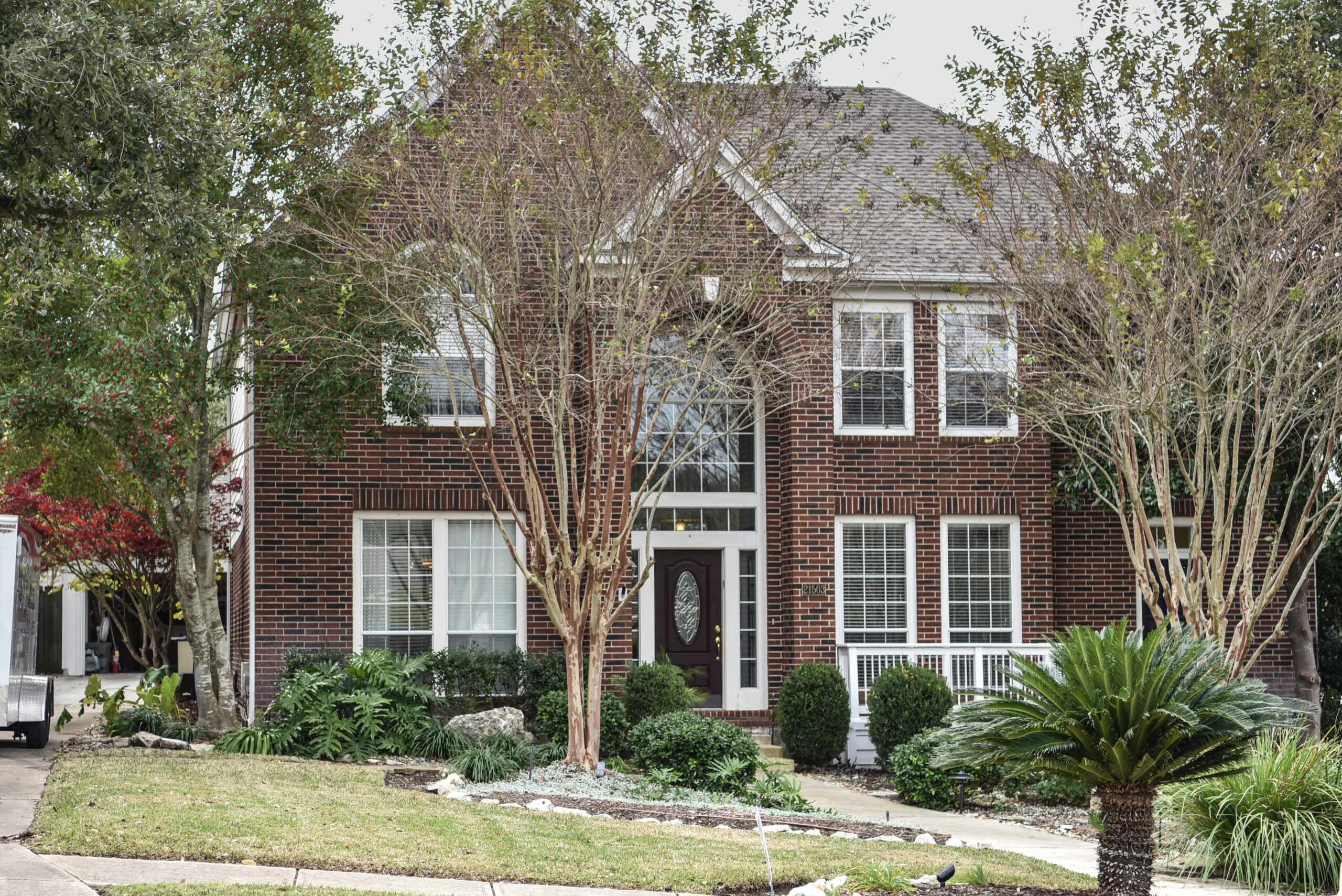

Points of Interest
- San Antonio Zoo
- The Alamo
- Mission San Jose
- San Antonio Museum of Art
- Ripley’s Believe It or Not
- AT&T Center
- Paul Hardberger Park (Stone Oak)
- Natural Bridge Caverns (Stone Oak)
- The Alamo Quarry Market (Alamo Heights)
Big Plus
- History is palpable in San Antonio Proper, especially downtown. The old, Spanish colonial style is the architectural standard for a lot of areas. Rich Hispanic culture permeates every aspect of life from the food to the festivals. There’s always something going on or somewhere to go. Use your time here to explore and immerse yourself in the Alamo City’s atmosphere and culture.
- San Antonio is a prime spot for homesteading after retirement, and many military families settle down here. The low cost of living, affordable homes, hospitable locals, and “small town” feel in this city are all draws for the area. Several of the city’s largest employers have planted in the San Antonio Proper area.
- Living in San Antonio Proper is fairly central to each of the JBSA installations. If you think there’s a possibility of being assigned to two different installations, this is a great area to focus on to “split the difference.”
- The San Antonio International Airport is conveniently located in San Antonio proper, and only a 15- to 30-minute drive from the areas we highlight here.
Things to Consider
- Living near any military installation comes with certain auditory side effects, and the air is swarming with military aircraft in San Antonio. Living in the central areas of the city will be accompanied by air traffic from JBSA-Randolph and JBSA-Lackland as well as the San Antonio International Airport.
- Tourism is real here. Millions—yes, millions—of visitors flock to San Antonio annually, and most of the hot attractions are in San Antonio Proper.
- Texas is hot. Like, sweltering hot. San Antonio has the added perk of experiencing humidity as well, so acclimate as quickly as you can. On the plus side, you can count on over 200 days of sunshine a year and relatively mild winters—as in rarely drops below freezing!
- San Antonio is a sprawling city. What it lacks in height, it makes up for in circumference. The two interstate loops that encircle the city and the various highways that pass through it help with getting around, but it still takes time. Be conscious of how far you are choosing to live from the center of town (downtown), and how that will affect the amount of time you or your spouse will be spending in the car.
Highlighted Areas
- Thousand Oaks, Argyle – Alamo Heights
- Las Lomas Heights, Mesa Verde – Stone Oak
- Timberwood Park – Hollywood Park
- The Pearl District – Downtown San Antonio
Looking at relocating?
Enter your information below and we will reach out to help the process.
7 Reasons You Should Consider Buying a Home
1. TAX ADVANTAGES
To encourage homeownership, the IRS has provided many tax breaks for owning a home. Credits may be available for specific home improvements, such as using clean energy or for qualified first-time home buyers. The way most homeowners see those advantages is through income tax itemization and deductions like mortgage interest and real estate taxes.
2. STABALIZE MONTHLY HOME COSTS
Owning your own house is one of the safest bets on stabilizing your monthly home costs. There’s no worry of rent getting increased significantly after each year of living in someone else’s home. Additionally, when you answer to yourself, there is no worry of landlord changes or unexpected lease termination.
3. HOUSE HACKING
Generally speaking, house hacking is a smart strategy that involves renting out a portion of your primary residence as a means of generating income to offset your own living expenses. Think turning your finished basement or mother-in-law quarters into an AirBnB! Or consider purchasing a multi-unit duplex or triplex: live on one side and rent out the other! If your home making money while you’re living in it doesn’t sound like your thing, there’s always renting it out after you PCS as an income generating investment property.
4. Increased Privacy
Generally speaking, house hacking is a smart strategy that involves renting out a portion of your primary residence as a means of generating income to offset your own living expenses. Think turning your finished basement or mother-in-law quarters into an AirBnB! Or consider purchasing a multi-unit duplex or triplex: live on one side and rent out the other! If your home making money while you’re living in it doesn’t sound like your thing, there’s always renting it out after you PCS as an income generating investment property.
5. Pets Are Welcome!
For those who choose to rent instead of buying, it can be extremely difficult to find rentals who allow for your
four-legged, furry friends. Landlords often require hefty pet deposits or place heavy restrictions on the number of pets and breeds they allow—if they will even allow pets. When considering quality of life, including beloved pets and the indoor and outdoor space available to them matters. Having the flexibility to include ALL members of your family as a homeowner is priceless!
6. Pride of Ownership
One of the greatest benefits of owning your own home is the pride of ownership that comes along with it. Not only are homeowners more inclined to take good care of their investment with routine maintenance and cleaning, but also they are free to make design choices ranging from hanging artwork on the walls, to paint colors, to customization of closets, electronics, and more. As military families who relocate frequently, having your home reflect who you really are feels important.
7. Safe and Stable Long Term Investment + Forced Savings
Owning a home has historically been one of the safest, lowest risk financial investments that tends to have long-term stability and success. As your home value appreciates and your mortgage balance decreases, what’s left is growing equity with an eventual paid off home. Making a monthly house payment is akin to setting aside a specific amount each month into a savings account—it’s a little difficult to access in the moment, but over time it can build into something significant in the form of equity.

FIVE RESOURCES TO HELP YOU IN YOUR RELOCATION PROCESS

Your PCS is underway!
The home buying and moving transition process has begun. Now what? If it feels like there are a million things to do, don’t fret because you don’t have to do them all yourself. During the relocation process, there are many service providers that can assist you in making your move a smooth one.
Consider these five resources to help you in the process
1. MOVING COMPANIES
Sure, the military offers transportation and relocation services, but many service members decide to coordinate the transfer of household goods themselves. Not only can you often earn money on the difference between moving costs and weight allowances, but you can be assured that you have more control over your belongings. Services that moving companies offer can range from delivery of boxes and pods for the “you-pack” model all the way to full-service logistics companies that will do all of the packing, loading, driving, and unpacking for you.
2. STORAGE
Whether you need to store your household goods for a few weeks until you close on your home or you decide that you have more stuff than square footage, storage companies abound. Sizes, conditions, and contracts vary widely so be sure to do your homework before you commit. Particularly in climates with extreme cold, heat, or humidity, it is important to consider using only climate-controlled storage to ensure the protection of your furniture and temporarily unused items.
3. TEMPORARY HOUSING
It is not uncommon for there to be a short gap of time during a military move between when you arrive at your new duty station and your new home being available to inhabit. No longer are hotels the only option for sticking out a few days or weeks during the wait. Vacation Rentals by Owner (VRBO) and Airbnb are great options to make you feel more at home while you wait for your home. In fact, why not take advantage of seeing your new city through the eyes of a tourist? Find a location near new local attractions and dining and enjoy a few days of getting to know the lay of the land.
4. USPS/IRS
Once you get settled in at your new home, it’s important that you alert agencies that will make sure your current and up-to-date address is on file. The United States Postal Service (USPS) and the Internal Revenue Service (IRS) are two of the most important and by doing so, any important mail or documents in your name should be forwarded or sent along to your new address. It’s also a good idea to notify banks, credit card companies, and other debt collectors of a change of address. These days nearly all of these transactions can be handled online.
5. DISCARD & DONATE SERVICES
No matter how much you purge, toss, organize, minimize, or donate before you pack up the moving truck, it never fails that after you get unpacked on the other side there seems to be more stuff to declutter. Discard and donate services can help with this. Many are a phone call away and will happily come to your residence for a pickup. Others are structured where you simply drop off at a store. A lot of these services are charitable organizations and will offer you documentation for your own taxes based on your donation. It’s a win-win: you downsize by donating, and someone else benefits from your use of your items.

